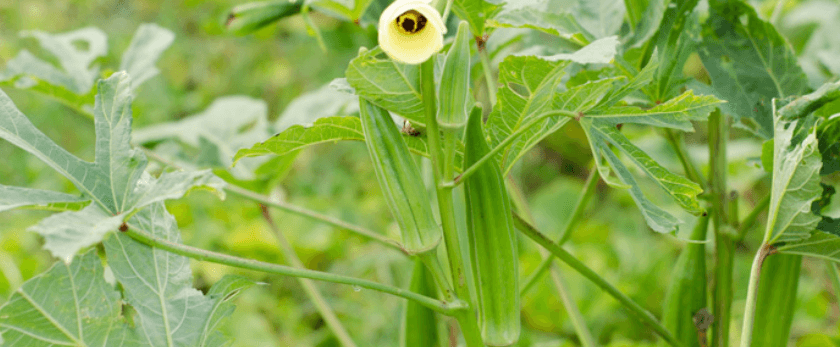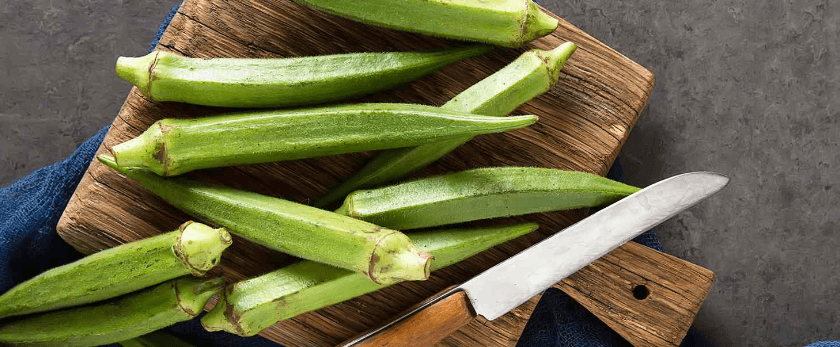Are you looking to add a new vegetable to your garden? Or perhaps you're interested in growing your own food and reducing your carbon footprint. Whatever your reason may be, growing okra is a great choice. Not only is it a delicious and versatile vegetable, but it's also easy to grow and has numerous health benefits. In this article, we'll guide you through the process of growing okra, from caring for the plant to common problems and solutions. So let's get started!
How to Care for Okra
Watering
Okra plants require consistent watering to thrive. They prefer moist, but not waterlogged, soil. It's important to water the plants deeply, at least once a week, rather than shallowly and frequently. This will encourage the roots to grow deeper and make the plant more resilient to drought.
During hot and dry weather, you may need to water your okra plants more frequently, up to two to three times a week. However, be careful not to overwater as this can lead to root rot. To check if your plants need watering, stick your finger into the soil about an inch deep. If it feels dry, it's time to water.
Light
Okra plants thrive in full sun, so make sure to choose a spot in your garden that receives at least 6-8 hours of direct sunlight per day. If you live in a hot climate, some afternoon shade may be beneficial to prevent the plants from wilting.
Soil
Okra plants prefer well-draining, loamy soil with a pH level between 6.0 and 6.8. If your soil is too acidic, you can add lime to raise the pH level. If it's too alkaline, you can add sulfur to lower the pH level. It's also a good idea to add compost or aged manure to the soil before planting to provide the plants with essential nutrients.
Fertilizer
Okra plants are heavy feeders and require regular fertilization to produce a bountiful harvest. You can use a balanced fertilizer, such as a 10-10-10, every 4-6 weeks during the growing season. Alternatively, you can use organic fertilizers, such as compost or fish emulsion, which will also improve the soil's overall health.
Pruning
Pruning okra plants is not necessary, but it can help promote bushier growth and increase the yield. You can pinch off the top of the plant when it reaches about 3 feet in height. This will encourage the plant to produce more lateral branches, resulting in more okra pods.

What is the Best Time to Grow Okra?
Okra is a warm-season crop and is best planted after the last frost in the spring. The ideal temperature for okra growth is between 75-90°F. If you live in a cooler climate, you can start the seeds indoors 4-6 weeks before the last frost and transplant them outside once the weather warms up.
It's also possible to grow okra in the fall, as long as you have at least 60 days of warm weather left before the first frost. However, keep in mind that okra plants are sensitive to cold temperatures and will not survive a frost.
Common Problems with Okra and Solutions
Pests
Okra plants are relatively pest-resistant, but they can still fall victim to some common garden pests. Aphids, flea beetles, and stink bugs are the most common pests that can attack okra plants. You can use insecticidal soap or neem oil to control these pests. Alternatively, you can introduce beneficial insects, such as ladybugs and lacewings, to your garden to naturally control the pest population.
Diseases
The most common disease that affects okra plants is powdery mildew, which is a fungal infection that appears as a white powdery substance on the leaves. To prevent powdery mildew, make sure to provide adequate air circulation and avoid overhead watering. If your plants do get infected, you can use a fungicide to control the spread.
Nutrient Deficiencies
Okra plants can also suffer from nutrient deficiencies, which can affect their growth and yield. The most common deficiencies are nitrogen, phosphorus, and potassium. You can use a balanced fertilizer to provide these essential nutrients to your plants. If you prefer organic methods, you can use compost or manure to enrich the soil.
In Conclusion
Growing okra is a rewarding experience that can provide you with a delicious and nutritious vegetable while also reducing your carbon footprint. By following the care tips mentioned in this article, you can successfully grow your own okra and enjoy its many benefits. Remember to water consistently, provide enough sunlight, use well-draining soil, fertilize regularly, and prune if desired. And if you encounter any problems, don't worry, there are solutions available. Happy growing!










